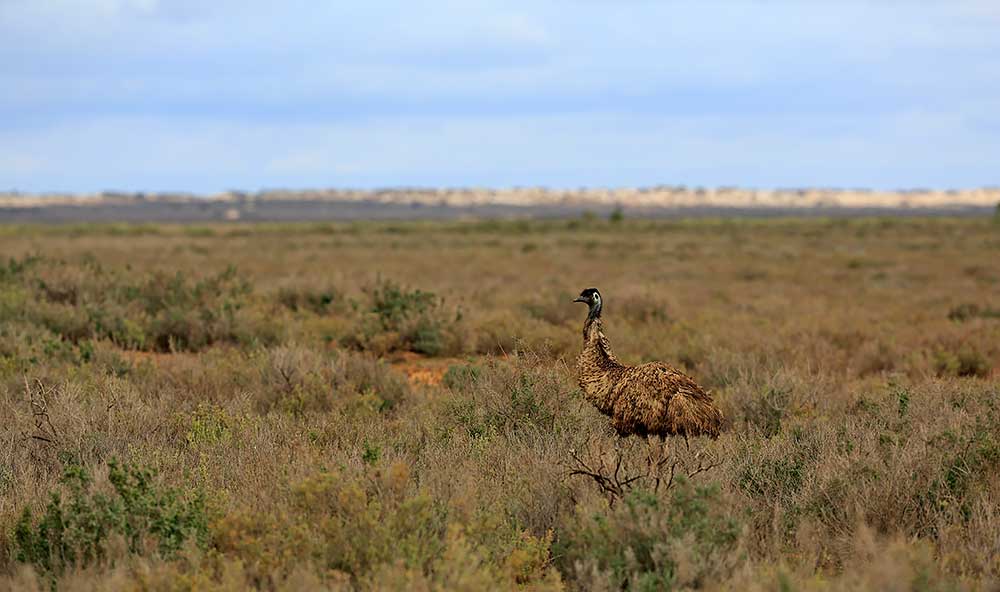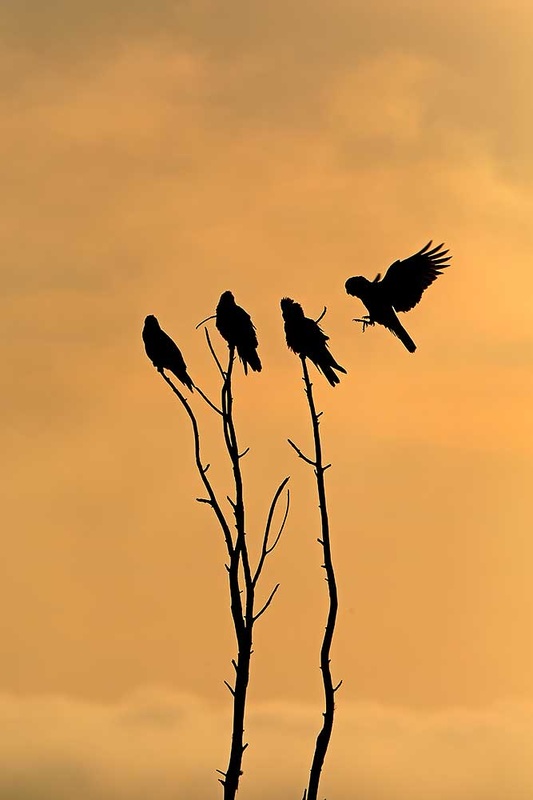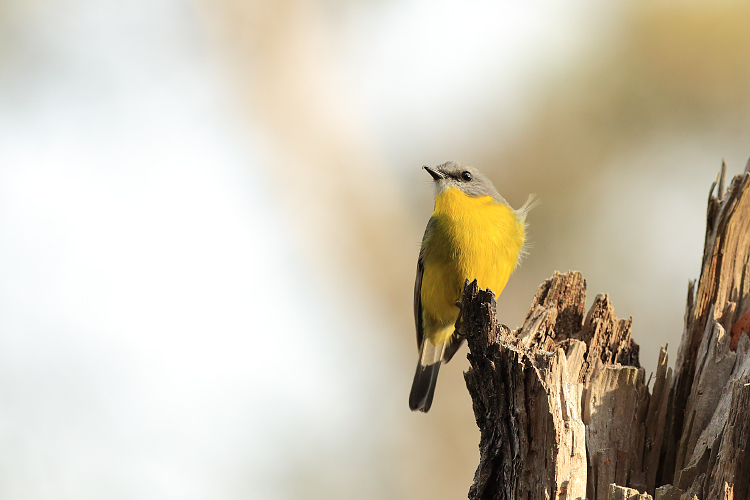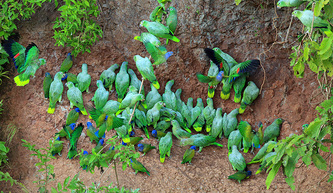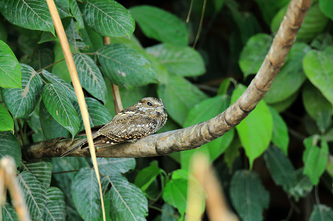|
As many of you will know, I spent a year living in Australia and absolutely fell in love with the country's magical wildlife. So when Wildlife Worldwide asked whether I would be interested in leading a dedicated photography tour there, I of course jumped at the chance. That was when Covid decided to pop its head up and the first couple of departures were postponed for 2 whole years. Finally, in December 2022, I was given the chance to take the helm for our very first departure. We started our adventures in the city of Melbourne and soon headed towards the city of Geelong and the You Yangs. Here we joined local naturalist and koala expert Roger, who we hoped would find us this arboreal member of the marsupial family. We were in luck. We then headed into the city of Geelong as we went to visit the colony of grey-headed flying foxes that call the mature trees home. It was here that we were also treated to some incredible views of eastern rosella. This colourful species of parrot are usually shy and rarely pose like this individual felt compelled to do. The next day, we headed to the nearby Serendip Sanctuary to photograph the resident eastern grey kangaroos and a wealth of other species that call this area home. It was a great first couple of days getting back in the swing of things with Australian wildlife. I absolutely love being with macropods (the family of marsupials to which kangaroos belong) and getting so close to such a big mob was absolutely fantastic. With a great couple of days behind us, it was time to return to Melbourne for a night before our flight across the Bass Strait and on to Tasmania. We started our stay in Tasmania by exploring the area's northern wilderness regions. Here the group enjoyed some wonderful views and photography of some truly iconic Australian species, including wombat, echidna and Bennett's wallaby. Finally, after a magical couple of weeks down under, we headed south to Bruny Island. The undoubted highlight here was the chance to see and photograph the diminutive, but critically endangered forty-spotted pardalote. It wouldn't be long before I would be back on Australian soil, hoping to photograph more wildlife in Victoria and Tasmania
0 Comments
Having travelled down the New South Wales coastline it was time to head inland on this last part of our Aussie adventure. Our first stop was in the rural town of Goulburn, there wasn't much in the way of wildlife there but we had heard of a place called Kangaroo Valley. This, as you might expect, is a valley home to plenty of Kangaroos but it wasn't these critters we were after. We had also heard that the valley was home to a thriving population of Wombats. Up until now we hadn't found any wombats so we really hoped that we might be in luck ... we certainly were as you can see below! We then headed further inland, across the Hay Plain towards the farming town of Mildura in northern Victoria. This is one of Australia's fruit growing capitals but nearby is the remote Mungo National Park. We headed out early on morning driving off the main highway onto a gravel road, an incredibly long gravel road of nearly 100 kms. After a few hours, we finally arrived at this wild landscape in search of the Red Kangaroo. This was the only chance on our trip to Australia that we might see this incredible desert survivor, so we had to make the effort. We struck gold, not only seeing the Red Kangaroos but also the Western Grey Kangaroos and wild Emus. The next leg of the inland part of our journey took us across another state border to South Australia. We followed the Murray River from Mildura towards the riverside town of Mannum. Nestled right on the edge of the winding river it was a bird-watcher's paradise with a very obliging community of Brush-tailed Possums just to top it off. The possums were fantastic and we loved the mother with her young baby, the images just don't really show the difference in their size. The next morning we awoke to a valley full of a thick mist and I knew I had to go to the waters edge and see what subjects I could find. The Black Swans and the Galahs were just superb and so cooperative, it was a truly magical morning. The next part of our journey is to the magnificent Kangaroo Island so come back soon and check it out!
Having spent just over a week in Sydney and sorting out the admin side of a working holiday visa (bank account, car, campsites etc.) we headed into the Blue Mountains, to the west of Sydney. These vast wooded hills rise up to over 1,000 metres (3,000 ft to the British readers) and are home to an amazing number of spectacular viewpoints and some stunning wildlife too. We decided to stay in a village called Blackheath, close to the rural town of Katoomba, for two nights as we explored a little of the region before moving up the eastern coast and on to our next destination, Port Stephens. The campsite was right next to the bush and we were surrounded by plenty of native flora and fauna, primarily birds and a few frogs which we never managed to see. Anyway ... on to some pictures! These first two images were taken right next to the campsite and I have to say I was happy to find the Frogmouth ... they aren't the easiest of birds to spot! So after doing some of the typical touristy stuff I had to get the long lens out again ... I can't resist when there is wildlife that is completely new to me! So a lot of birdlife was all around but the mammals were proving to be elusive, amazing how it is the same world over! Next stop on our road trip north is Port Stephens ... let's see what that brings us in the way of wildlife and landscapes!
The third day in the Amazon Basin and another early start, this time I was heading to the famous 'clay licks' on the Napo River. These are muddy cliff faces along the river bank, where large numbers of Parrots come to feed on the soil. First though, we had to head across the black lake and a short walk through the forest to get to the motorised canoes. When we arrived at the river side of the lake, we were greeted by a tell tale crashing sound in the canopy. There, above us, were a huge group of Squirrel Monkeys, undoubtedly the same group as we saw upon our arrival to the forest, and joining them were a group of White-faced Capuchins. They 'monkeyed' around for a while but we couldn't stay long, we were on a mission that had a time limit. After our morning monkey fix we quickly made our way to the motorised canoes on the banks of the Rio Napo. After around a 30-minute ride down the river, we arrived at the large clay cliff where we would not have to wait long for our feathered friends. The noise was what you notice first, a constant noise which can only sound like a group of parrots together. They chatter among themselves, until one builds up the courage to leave the safety of the trees and expose themself on the bare cliff face. The parrots have to come back every few days, a wide variety of species are reliant on these clay licks to ensure that the minerals in the soil counteract the naturally occuring toxins in their diet. If they couldn't get these vital nutrients then they would not survive. Occasionally the odd Boa Constrictor ambushes the birds as they fly to the cliff face and this is why they are particularly nervous and flighty. We we were quickly in luck with a variety of different species feeding on two different parts of the bank. Mealy Amazons making up most of the numbers but Dusky-headed Parakeets providing plenty of vocal support. We next visited the inland 'cave' parrot lick of Napo Wildlife Centre, this was around a half an hour walk into Yasuni National Park and a sit and wait affair. The noise again was staggering, particularly as the birds surround you in the trees above, you know they are there but you just can't see them. Gradually they come lower and lower until one brave individual decides to break cover and starts to carve off small slices of clay which it eats as if it were food. Have a look at the video and you can hear the noise for yourself! After a long day out and about around the forest and spending time around the clay lick on and off up until lunch, it was time to head back to the lodge and try my hand at a bit of afternoon macro photography. However a very unexpected visitor ended up altering my plans somewhat. I practised my macro photography as I was meant to be running a workshop there later on in the evening, and having found some good subjects in the shape of spiders and other creepy crawlies I was happy to get some rest. However, on my way back to my room I saw some movement ... As you can see the surprise animal, and now definitely one of my favourite species worldwide, was the Pygmy Marmoset. This is the world's smallest monkey, in fact it is actually hard to describe just how small this monkey is. Let's just put it this way, it would easily fit into the palm of and adult person. At first I only saw some movement on the edge of one of the walkways, I actually thought it was a small bird. It was only as I approached the tree it jumped into, that I realised I had found this amazing little creature. I tried to find others around the lodge so they could also see this tiny primate but they had all gone out on their afternoon activities.
I was very lucky to be completely alone with the little fellow and at one point was no more than 3 metres away, it was actually quite an intimate moment. Two primates of vastly different sizes, checking on another out and seeing what they are about. It seemed just as intrigued by me as I was by it. That was why after the first shot above, the others are in the open, it was quite content to come out in the open and not hide away. What a day it was then ... amazing parrot sightings, a trip down the Rio Napo (a tributary to the mighty Amazon) and the world's smallest monkey hanging about and happy to let me take its portrait. I guess that is the beauty of wildlife, sometimes it ends up coming to you and that makes it that much better! |
AuthorBret Charman Archives
July 2024
Categories
All
|













